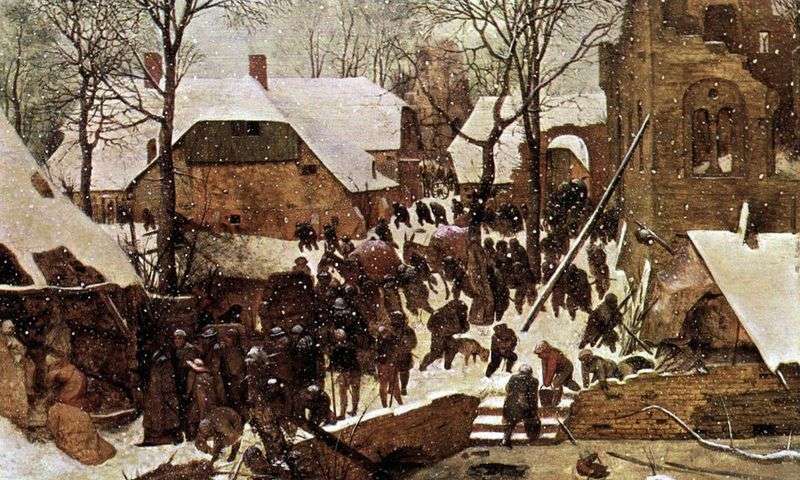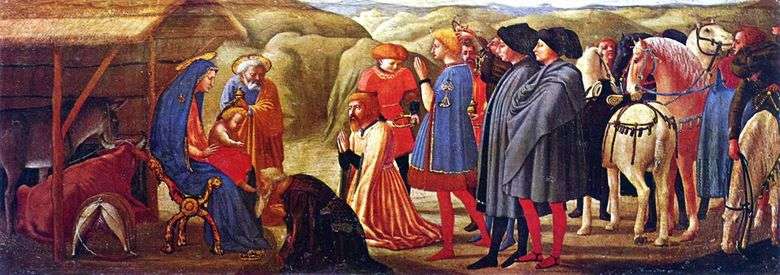
Initially, this picture was part of the Pisa polyptych, the most significant order that Masaccio received. The Adoration of the Magi was the central panel of the predella, the lower row of paintings located under the main scenes of the polyptych.
As a rule, the predella consists of long narrow panels, and in this case a panel of the same format is represented here. The owner of the chapel, for which this altar image was written, was a notary serie Julian di Colino degli Scarcy, who left notes about the sums paid for the work of Masaccio and other artists.
This is the only documentary evidence that has come down to us, associated with the name Masaccio. Unfortunately, there are no documents on the future of the polyptych, so we can only say that this altar image probably existed until the end of the 16th century, when a major restructuring of the church began.
In the Description of the City of Pisa, published in 1787, the Masaccio polyptych is referred to as lost. But already in 1796 one of the panels of this image was found and presented to Pisa. Gradually discovered ten more panels. Seven of them, including the Adoration of the Magi, are located in Berlin.
 The Crucifixion of Peter and the Beheading of John the Baptist by Masaccio
The Crucifixion of Peter and the Beheading of John the Baptist by Masaccio Adoration of the Magi by Hans Baldung
Adoration of the Magi by Hans Baldung Altar Obra by Masaccio
Altar Obra by Masaccio Adoration of the Magi by Domenico Ghirlandaio
Adoration of the Magi by Domenico Ghirlandaio The Adoration of the Magi in the Winter Landscape by Peter Brueghel
The Adoration of the Magi in the Winter Landscape by Peter Brueghel Adoración de los magos – Masaccio
Adoración de los magos – Masaccio Adoration of the Magi by Jan Gossaert
Adoration of the Magi by Jan Gossaert The Adoration of the Magi by David Gerard
The Adoration of the Magi by David Gerard